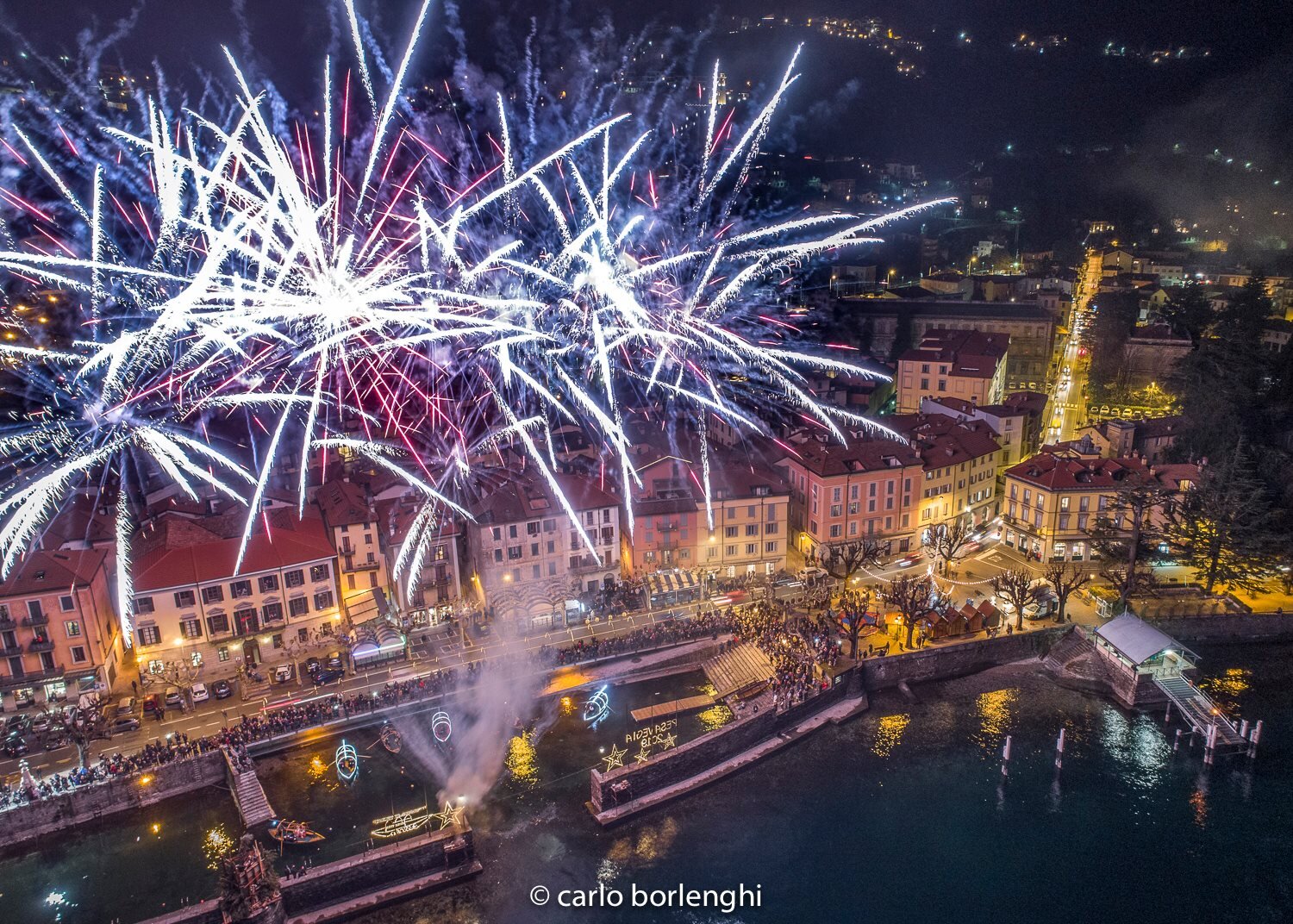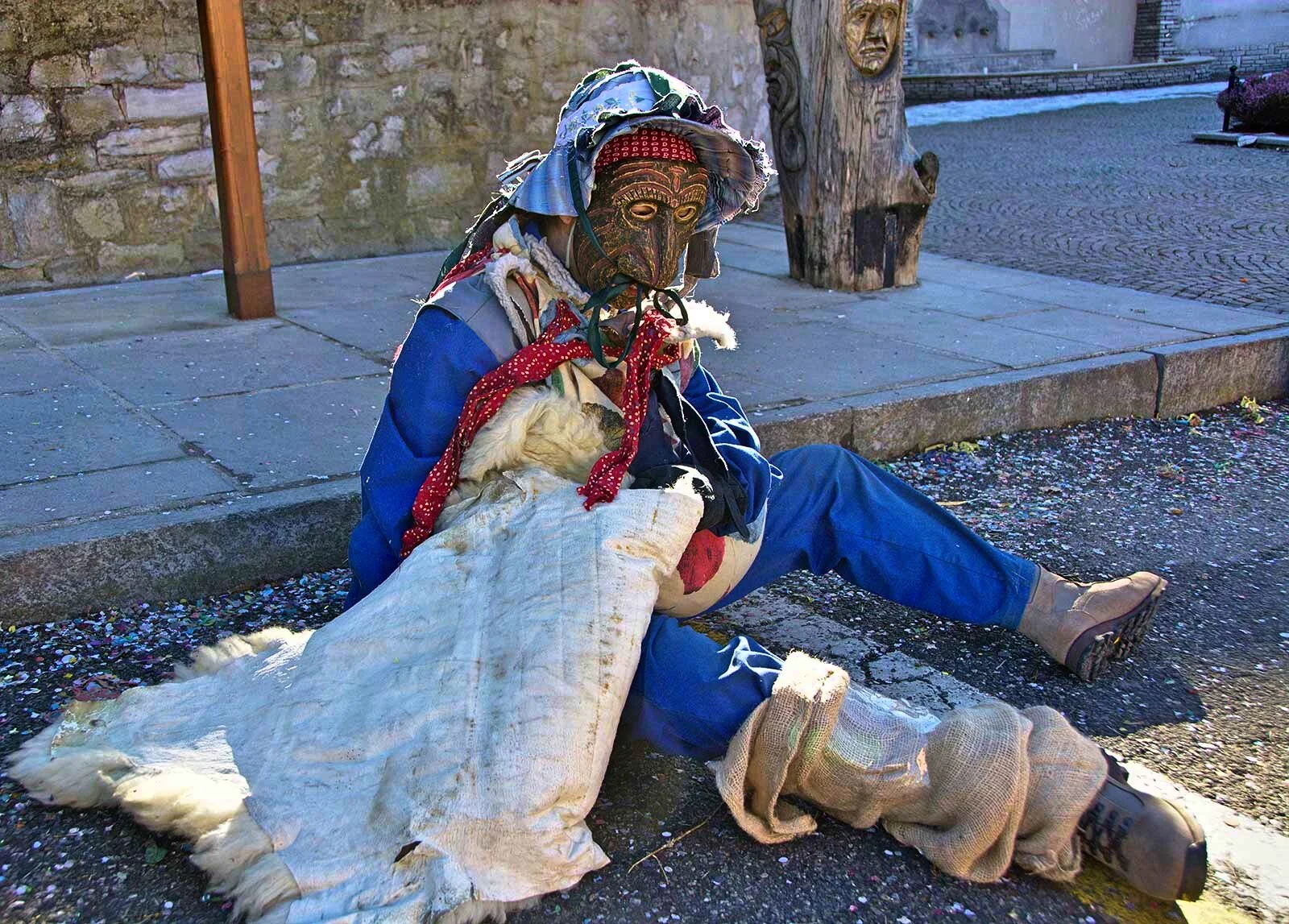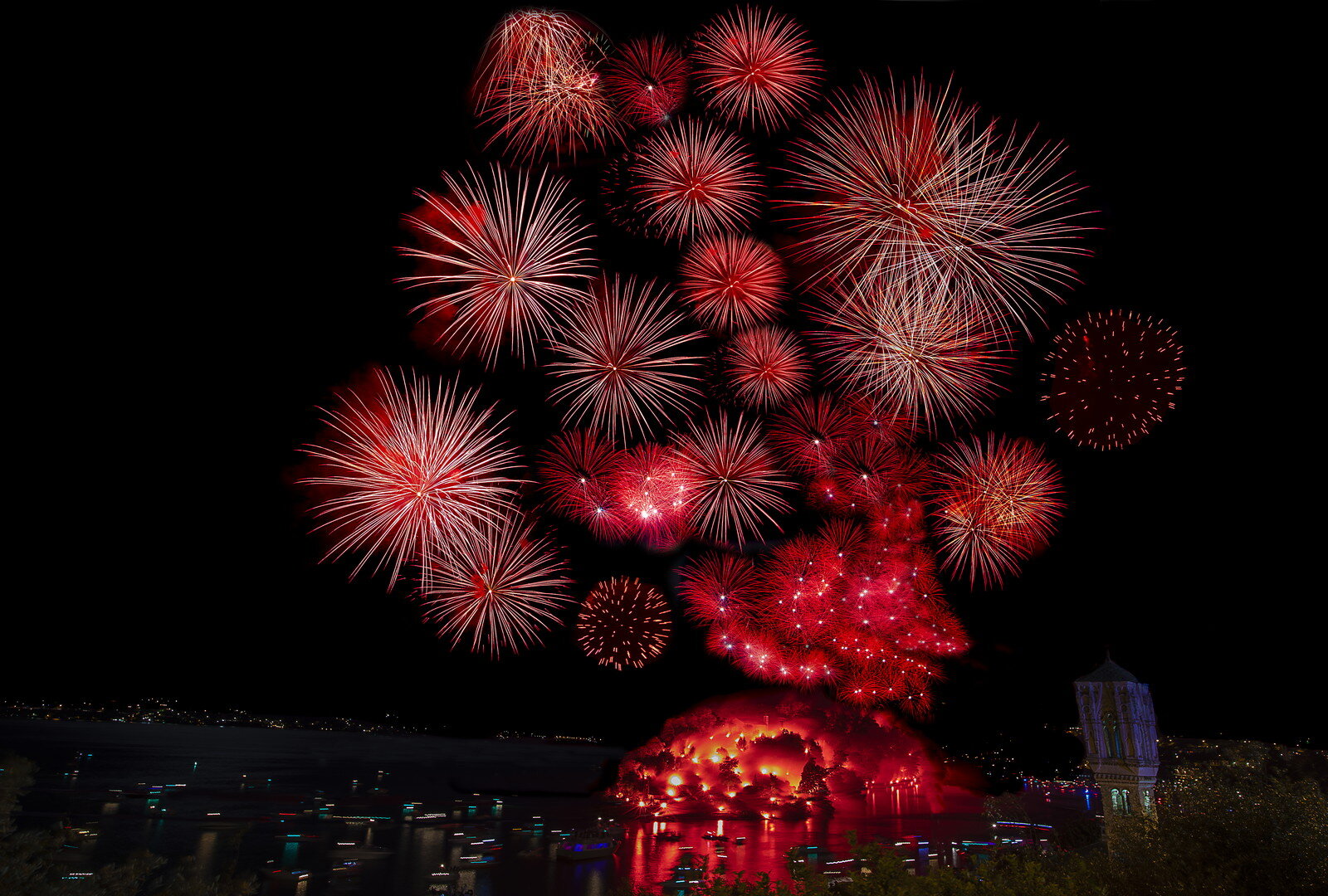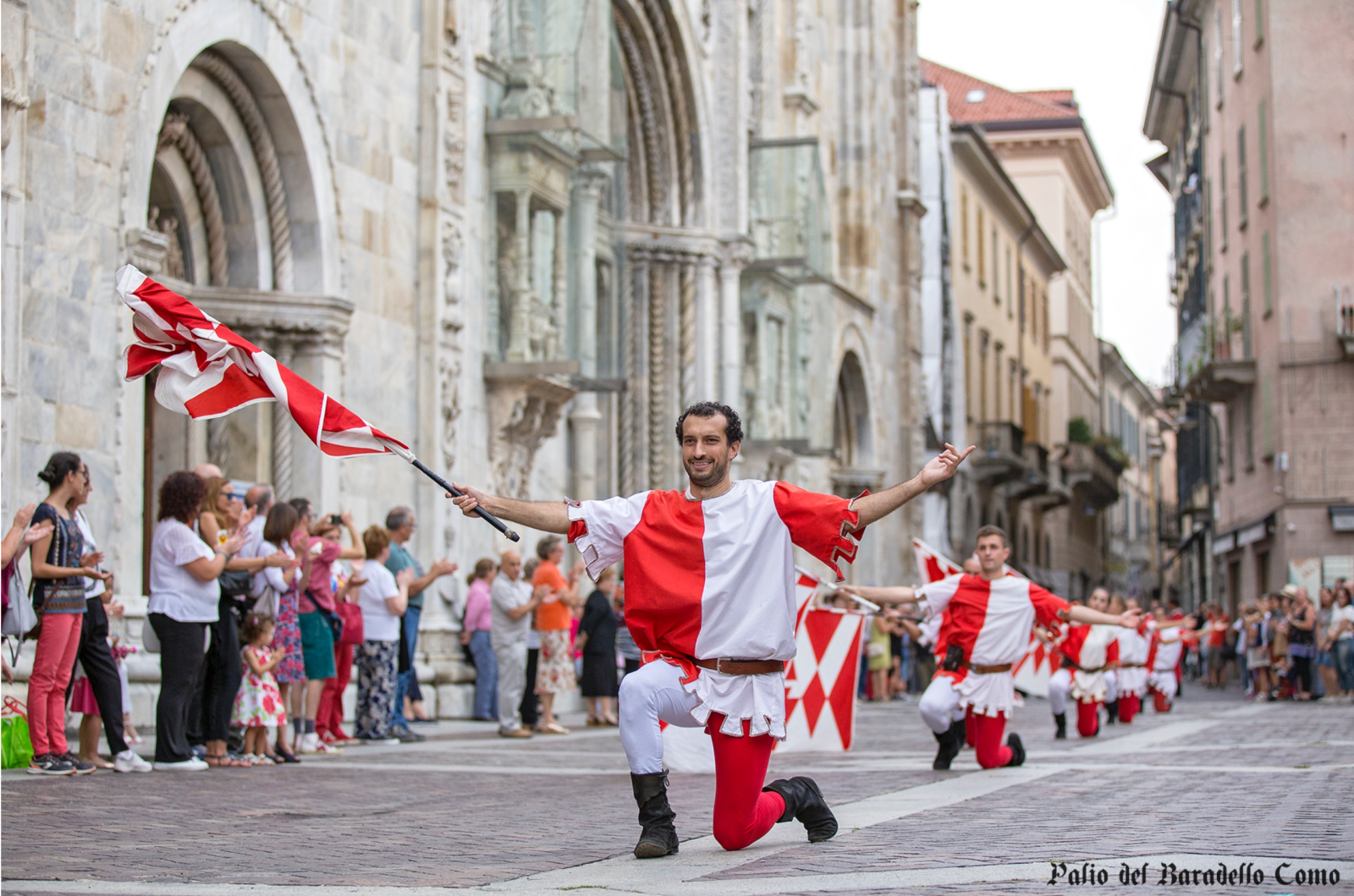10 Traditional Festivals of Lake Como You Can’t Miss During The Year
January: what better time of the year to start planning all the events at Lake Como you can’t miss during the year!
To help you getting the big picture of our events calendar, we have prepared for you a list of the most iconic traditional festivals of Lake Como, month by month.
You’ll be surprised to see that every village has its own festival, and you know what?, locals feel incredibly proud of these celebrations, as they’re a strong and timeless expression of the identity of each town.
Ready to jump into the kaleidoscopic culture of our lake? Continue reading, then!
January: Pesa Vegia in Bellano and Festa della Giubiana
The Pesa Vegia is by far one of the most spectacular and evocative festivals of our lake.
The event is held every year on January 5th, and it’s basically a great re-enactment where history mixes with popular stories, Larian traditions and symbols of the Christian Epiphany.
Image by Carlo Borlenghi
The origin of its name dates back to 1605, when Governor Pedro Acevedo introduced a terrible reform restoring the old units of measurement (hence the name Pesa Vegia). The new units, the Pesa Nova, had caused disappointment in the Bellano merchants: that "iniqua ordinance" was considered a real calamity for the village's commercial activities.
That’s why the Spanish Governor was formally asked to cancel the new scales and restore the old ones. Pedro Acevedo sent an expedition headed to Bellano to communicate his decision; you can imagine how tense the atmosphere was in the village that night, with all the people waiting on the shores of the lake the boat with the awaited verdict. Hopefully the answer was Pesa Vegia, so the crowd cheered and cried for the joy. The whole village rushed to the dock to welcome the Spanish messengers carrying the benevolent order.
The people from Bellano have been celebrating this event for 4 centuries every year, even in times of war and privation, staging the procession of the Magi, the race of the Pesos through the streets of the town and the bonfire on the pier.
Just a data: this year the event featured more than 400 extras, including camels. And then there were fireworks, bonfires, music, little markets with delicious food. All the ingredients for a big party. Definitely a WOW event to be noted in your agenda!
Image by Carlo Borlenghi
In the meanwhile, if you’re too curious, peak at this year’s video.
But that’s not all for our list of January’s events. We can’t help mentioning the Giubiana Festival, a very old propitiatory ritual and one of the most fascinating folkloric events of many villages in the province of Como.
Image by Gruppo Fotografico La Pesa, via www.comune.cantu.co.it
According to recent studies, the origin of this festival is Celtic, dating back to I cent. A.C: the tradition wants that in a very specific date of the cold season (generally the last Thursday of January), a fire must be lit to literally drive away the winter with all its trouble and malaises. Winter is represented by the Giubiana (aka Giübiana/Gibiana), a puppet made of rags and straw, with the features of an old woman or a witch. The name could also derive from Joviana, that is the goddess of fertility Juno, but also from the father of the gods Jupiter, in Latin “Jupiter-Jovis" (that’s why the festival is celebrated on Thursday). Interestingly, Thursday was also the day of the week when witches performed their satanic rites.
In people’s imagination, the Giubiana has always been considered a thin woman, with very long legs and red stockings, living in the woods and moving from tree to tree, frightening children.
In many villages, during the pyre people use to eat a risotto with luganega (sausage) all together: that’s because, still according to the legend, the mother of one of the above mentioned children managed to take the witch into a trap thanks to a magnificent and inviting pot of risotto.
February: Schignano Carnival and Sant’Apollonia festival
The one of Schignano is by far one of the most exciting and fascinating carnivals not only of our lake, but we’d say even of Italy.
Image by Dominique Citrini, via www.carnevaledischignano.it
This festival has a primitive, ancestral soul. What it tells is basically the eternal challenge between the bourgeois class (I Bei, the masks with colorful dresses, laces, sumptuous sticks, umbrellas and gaudy fans) and the shepherds/peasants one (I Brut, covered with rags, animal skins and heavy bells). ⠀
All the masks are carved in the wood by local artisans.⠀
An interesting fact is that none of these masks is allowed to speak during the parades (except for the funny figure of the Ciocia, the Bel’s wife): what you’ll hear, then, will be exclusively the noise of the Bruts’ bells.
Fun fact: the heavy bells and all the the cloths of the Bruts’ costume weight up to 10 kg!
So this is definitely a multi-sensorial experience not to be missed. Have a look at this video to get a taste of what this crazy carnival is.
Let’s now talk about a far less known event. The one of Sant’Apollonia is not a particularly famous festival, but Asso (in the district of Vallassina, 30 minutes driving from Bellagio, where the event is) is a super old village and is definitely worth a visit.
Apollonia is saint of African origin. The festival, held on February 9th, is accompanied by a very ancient ritual: balls made of papers and cotton are set on fire. On this day, a big zootechnical and agricultural fair takes place in the village. The traditional dish of the day is the busecca: a tripe with beans, celery, carrots, tomatoes, cheese and nutmeg.
March: Palio dei falò in Lezzeno
An old local proverb says: “El desdott el falò, el desnöf l’é Son Giüsepp, el vint la fêra, el vintü la primavera” which in English is something like “on the eighteenth we hold the bonfire, on the nineteen it’s Saint Joseph, on the twentieth there’s the fair, and on the twenty-first it’s spring”.
The Palio dei Falò (Bonfires festival) is a centuries-old tradition (dating back to 1190) in which bonfires are lit to illuminate the lake and greet the spring, arriving on March 21.
Image via bellagiovillas.com
The whole village is engaged in the preparation of great fires (with poles up to 20 meters!), in which everything is burned. There’s even a competition: the tallest and most original bonfire is awarded.
According to some theories, the bonfires along the shores of the lake would also be a reminder of the fires where tons of women - considered witches - have been brutally burned during the sixteenth century.
June: Saint John’s Festival on Isola Comacina
This is one of the most ancient popular festivals of Lake Como, and most of you probably already know what we’re talking about. The festival, that over years have become one of the icons of our lake, takes place on and around Isola Comacina (Tremezzina, western shore of the lake), on June 24th, the day of Saint John the Baptist. A procession of boats (called lumaghitt, literally little snails) goes to the island, while the previous evening a grandiose illumination makes the lake shine.
The festival represents a bitter chapter of our local history. During the Ten Years War between Como and Milano, Isola Comacina became an ally of Milano. Como was conquered in 1127, but soon raised with Federico Barbarossa against the enemies: as a result, the island on 1169 was completely burned and destroyed, including its nine beautiful churches. The few inhabitants who survived ferried towards Varenna to establish a new community: Insula Nova.
Image by Maurizio Moro
July: the regatta of Lucìe
Image via La Provincia di Como
In July, don’t miss the regatta of the Lucìe, the typical boats of our lake, the ones described by Alessandro Manzoni in his novel "Promessi Sposi" (1827). The regatta starts from Lezzeno and every year presents a different itinerary.
September (first and second weekend): Palio del Baradello in Como and Sagra del Missoltino in Mezzegra
The Palio del Baradello is the historical re-enactment of the arrival of Frederick of Svevia (aka Barbarossa) in Como, in March 1159: a real dive into the past. History tells that Como needed to ask Barbarossa to end the abuses from Milan. This alliance became an important moment, to be celebrated with games, tournaments and banquets: you can revive pretty much everything with this festival.
Image via www.paliodelparadello.it
The symbol of the Palio is the Castel Baradello, the "stone sentinel" that stands out on the hills of the Spina Verde, erected for the defense of Como in 1156.
The festival includes a fantastic medieval dinner (generally hosted at the Broletto and accompanied by acrobats, jesters and musicians), fiery shows, medieval dances, races between Lucìe and laundresses (a female race with a wheelbarrow full of clothes), and the unmissable tug-of-wars.
The event ends with the historical parade with more than 1000 participants, including the Bagpipes of Franciacorta, the greyhounds, the falconers and the archers. At the end of the parade, the artistic Drappo (the palio ‘banner’, drape) is delivered, remaining permanently to the winning hamlet.
Another cool event in September is without a doubt the Sagra del Missoltino in Mezzegra (Tremezzina). Most of you probably already tasted (and loved) this sun dried shad, one of the kind dish of our table.
October: the witches of Rovenna (Cernobbio)
“Castagne, Streghe e Dintorni”: a magical event inspired by chestnuts (that in the past was the main source of economic income for the inhabitants of the village), as well as by... witches. Yes, because the women living in Rovenna have always boasted an incredible knowledge about the healing power of local herbs - that’s why they’ve often been considered as witches.
Image via the official website of the event, castagnestregheedintorni.it
Are you planning a trip to Lake Como for your house hunting and you need helpful tips to get around?









